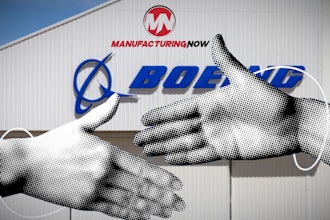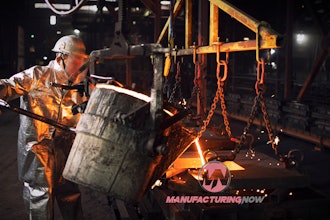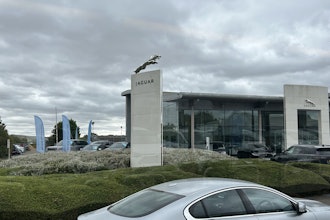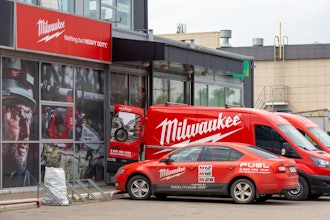 Metal-seated ball valves used in highly corrosive or erosive applications must be able to withstand challenging operating environments. Zirconium, titanium and other reactive/refractory metals are extremely corrosion- resistant and are often used by valve manufacturers to design valves for applications involving sulfuric, hydrochloric and acetic acids.
Metal-seated ball valves used in highly corrosive or erosive applications must be able to withstand challenging operating environments. Zirconium, titanium and other reactive/refractory metals are extremely corrosion- resistant and are often used by valve manufacturers to design valves for applications involving sulfuric, hydrochloric and acetic acids.
Reactive/refractory metals are relatively soft materials that often gall or are easily damaged in applications that require metal-to-metal seating with significant dynamic contact. Applied coatings can be employed to produce surfaces resistant to wear and gall. However, coatings can introduce materials that might not have sufficient corrosion-resistant properties for the application, as well as have issues with cracking, delamination and porosity. Other methods for surface hardening provide results that are too variable for practical application to precision valve parts.
Flowserve has developed a solution that surface hardens these metals without altering their corrosion-resistant properties. The process uses the precise time-and-temperature abilities of fluidized bed heating and controlled atmosphere to produce a hard, uniform case on reactive/refractory metals.
The development of the process has allowed the application of metal-to-metal seating with reactive/refractory metals in valves without galling or introduction of dissimilar materials or coatings. This method has preserved the corrosion resistance of metal-seated ball valves in corrosive environments.
The process has allowed valves to be used in harsh applications where they were previously unable to operate, resulting in continued innovation in process design. New designs and processes enable efficiencies in overall plant design, reduce maintenance requirements and make possible new and improved end products.
The Use of Refractory Metals in Valve Design
When processes require equipment that can handle the most demanding, corrosive or erosive fluids, valves constructed of refractory/reactive metals are often the answer. These metals comprise a class of materials extraordinarily resistant to heat, wear and corrosion and include:
- Tungsten.
- Tantalum.
- Zirconium.
- Titanium.
- Niobium.
- Molybdenum.
 Refractory/reactive metals are characterized by their extreme melting points (above 1850ºC) — well above those of iron and nickel commonly used in ball valve applications. Metals such as tungsten and molybdenum are commonly used in applications from light bulb filaments to strengthening alloys for steel, and valve designs commonly use zirconium, titanium, niobium and tantalum for their specific corrosion-resistant properties.
Refractory/reactive metals are characterized by their extreme melting points (above 1850ºC) — well above those of iron and nickel commonly used in ball valve applications. Metals such as tungsten and molybdenum are commonly used in applications from light bulb filaments to strengthening alloys for steel, and valve designs commonly use zirconium, titanium, niobium and tantalum for their specific corrosion-resistant properties.
The interesting feature of these materials is that when exposed to air, the outer surface quickly oxidizes, forming stable, protective and self-healing oxide films that are extremely resistant to corrosion. In fact, these metals have such an affinity for oxygen that they must be melted in a vacuum, as they will burn if heated in air. As a result of this oxide outer layer, this group of metals exhibits excellent corrosion resistance in a variety of extreme chemical applications with little to no corrosion rate.
The challenge presented in using these metals in ball valve design occurs when the application’s physical process or temperature range prohibits the use of polymer seats and seals or polymer linings, thereby requiring a metal-seated valve.
The biggest difficulty with these metals is their relative softness and propensity to gall. With zirconium at 115 Brinell, titanium GR2 at 135 Brinell and tantalum at 123 Brinell, parts with heavy dynamic contact, such as metal-to-metal seats, are easily scored, galled or damaged. This makes them difficult to use for metal-to-metal seating in their natural condition.
Traditionally, when using more common metals for metal seated ball valves, coatings were used to accommodate sealing. The challenge when going to a reactive/refractive metal was finding a method to surface harden these materials for use on a flexible metal seat in the finished machined condition (see Fig. 1). Applied coatings proved too stiff, had too little corrosion resistance compared to the reactive metal or created unacceptable dimensional changes in the finished part.
had too little corrosion resistance compared to the reactive metal or created unacceptable dimensional changes in the finished part.
When a suitable solution could not be found via traditional means, a new method was developed to create the desirable oxide layer — strengthening or hardening it enough to support dynamic metal-to-metal contact.
Fluidized Beds & the Hardening Process
The initial study was around hardening zirconium grade 702, due to numerous uses and applications for zirconium valves. Zirconium can be thermally treated in air at 550ºC to increase the thickness and hardness of the oxide film to upwards of 47Rc. The enhanced oxide film can resist abrasion and wear; however, testing in metal-seated applications revealed the oxide film was not durable enough to resist galling.
Furthermore, additional treatment time and temperature increase the oxidation rate and, if not carefully controlled, produce an oxide layer that is rough and friable and also create dimensional changes or distortion. One familiar technology employed to enable more precise control than treatment in air is the fluidized bed.
Fluidized beds have been used in the past for various metal treatment processes including oxidizing and nitriding. The advantages of the fluidized bed include:
- More uniform heat transfer than in an air furnace.
- Creation of an inert atmosphere by fluidizing with inert gases at much lower volumes than that required by a normal, controlled atmosphere furnace.
- Controlled rates of heating and cooling by cycling the fluidization.
- Easy, independent control for precise mixtures and volumes of desired gases to oxidize or nitride.
- Fluidized-bed materials that are inert to the workpieces and the injected gases.
 The Flowserve hardening process uses the precision time and temperature capabilities of fluidized bed heating and controlled atmosphere to produce a hard, uniform case on reactive/refractory metals. Extensive testing improved the process, which determined the optimal amounts of fluidizing and process gases needed, as well as the process temperatures required, to improve the hardened oxide layer on zirconium.
The Flowserve hardening process uses the precision time and temperature capabilities of fluidized bed heating and controlled atmosphere to produce a hard, uniform case on reactive/refractory metals. Extensive testing improved the process, which determined the optimal amounts of fluidizing and process gases needed, as well as the process temperatures required, to improve the hardened oxide layer on zirconium.
A simplified diagram of a fluidized bed furnace is shown in Fig. 2; initial tests were carried out in a small test furnace (see Fig. 3); and a production furnace is shown in Fig. 4.
Zirconium oxide (zircon sand) was chosen as the fluidizing media due to its high refractory properties, resistance to thermal cycling and availability; its use eliminates any potential oxygen diffusion into the workpiece. Fluidizing the media with a slow, uniform gas flow produces a liquid-like state that enables workpieces to be inserted and removed with ease. The fluidized media performs many functions, transferring heat to the workpiece, cooling the workpiece when the heat source is removed, or, if fluidization is stopped, can insulate the workpiece.
Results for Zirconium & Other Reactive/Refractory Alloys
Zirconium
Previous zirconium industry research indicated a dark blue-black oxide had good hardness properties but a thin case. Testing by using the original furnace eventually produced a thicker oxide case with a dark blue to blue-green color. Micrographs revealed an oxide layer of .0008" to .001" (25 microns) with a diffusion zone of oxygen alloyed zirconium below from .001" (25 microns) to as much as .003" (75 microns).
The temperatures that formed the ideal oxide layer were found to be much higher than the 550ºC of previous practice, yet below the  lower critical transformation temperature for zirconium. The hardening process also maintains dimensional stability of the workpieces, enabling hardening of finished machined pieces.
lower critical transformation temperature for zirconium. The hardening process also maintains dimensional stability of the workpieces, enabling hardening of finished machined pieces.
When the process was extended past ideal oxide formation time, the oxide layer continued to form and transitioned to a beige color (see Fig. 5). This oxide is very low in strength, friable and will slough off, ruining the workpiece. This discovery confirmed that once a zirconium part is hardened in this fashion, it cannot be re-hardened, as the oxide layer will continue to oxidize to this undesirable phase. Only if the oxide layer is removed can the process be performed again.
Other Refractory/Reactive Metals
Other reactive metals have responded well to the fluidized bed based hardening process. Titanium has been successfully nitrided, producing a surface hardness of 54Rc to 57Rc on grades 2 and 5, respectively, by introducing precise amounts of nitrogen to the inert atmosphere of the fluid bed. In the process of this research, it was found that the nitride effect was self-limiting. As the surface absorbs nitrogen and alloys with the metal, the layer formed inhibits further penetration of the nitrogen, thus limiting the depth of case to a hardened layer of about .001" (25 microns) with a diffusion zone of an additional .001" to .002". This effect has proven adequate for the flexible metal seat design.
 One advantage of the self-limiting characteristic in titanium nitriding is that the part can be reintroduced to the process, should the bare titanium surface be exposed from post machining or processing, without damage to any remaining hardened surfaces. This benefit is thanks to the nitrogen diffusion alloying with the titanium as opposed to producing an oxide layer as with zirconium.
One advantage of the self-limiting characteristic in titanium nitriding is that the part can be reintroduced to the process, should the bare titanium surface be exposed from post machining or processing, without damage to any remaining hardened surfaces. This benefit is thanks to the nitrogen diffusion alloying with the titanium as opposed to producing an oxide layer as with zirconium.
Aside from zirconium and titanium, many other refractory/reactive metals have been successfully hardened using this fluidized bed technique. These metals include:
- Tantalum Grades CP, 2.5%W-Ta, 7.5%W-Ta and 10%W-Ta.
- Niobium.
- 55 Niobium-Titanium.
For tantalum and the tantalum alloys listed, the previously discussed nitride process is used, producing a similar hardness obtained on titanium.
Research into other materials is ongoing and has met with differing degrees of success. Zirconium 705 has been hardened, but the  up to 4.5 percent hafnium and the 2-3 percent niobium alloying makes 705 considerably more reactive to oxidation and therefore very difficult to control. Additionally, grade 705 is much more susceptible to dimensional change as a result of the process than 702. Titanium alloys beyond grade 5 do not nitride in this process, where it is believed the alloys contained in the higher grades inhibit the nitride process. Further study is needed to understand the issues.
up to 4.5 percent hafnium and the 2-3 percent niobium alloying makes 705 considerably more reactive to oxidation and therefore very difficult to control. Additionally, grade 705 is much more susceptible to dimensional change as a result of the process than 702. Titanium alloys beyond grade 5 do not nitride in this process, where it is believed the alloys contained in the higher grades inhibit the nitride process. Further study is needed to understand the issues.
Applications for Fluidized Bed Hardened Components
The development of the fluidized bed hardening process has allowed the application of metal-to-metal seating with reactive/refractory metals in valves without galling or introduction of dissimilar materials or coatings. This process has provided new solutions and preserved the corrosion resistance in a multitude of corrosive and erosive environments.
Valves are now being installed in environments they previously would not have been able to withstand, which has resulted in innovation in process design.
Below are production parts in both titanium and zirconium (see Figs. 6, 7 and 8).
Using this hardening process enables the manufacture of reactive metal-seated valves that would otherwise not be feasible where reactive/refractory metals are required. As an example, Fig. 9 shows an 18 inch all-zirconium ball valve with a hardened ball and seats in a floating design developed for use in acetic acid service. Prior to the development of this hardening process, a floating-ball valve in this application could not have been produced due to material limitations. A floating ball design involves the seats supporting the weight of the ball as well as any forces acting on the ball in service. While a polymer seat would have been sufficient to seal at the process temperature, it could not have properly supported the ball without deforming at ambient temperature, let alone at the elevated process temperature. Only fluidized bed hardened zirconium seats provided the needed solution for a valve of this size in acetic acid.
 Enabling Innovation
Enabling Innovation
The development of fluidized bed hardening techniques for reactive-refractive materials, such as those discussed above, can enable manufacturers to support new applications that span industries ranging from chemical to aerospace. Some examples include:
- Surface hardening pistons for hydraulic flight control valves, eliminating a dry film lubricant.
- Surface hardening reactive/refractive fasteners, allowing disassembly and reuse without galling.
- Reactive/refractory hardened sleeves for pump shaft seal sections, increasing service life by reducing shaft wear.
- Hardening of a titanium GR 5 hydraulic servo housing for the space shuttle robotic arm.
Without the development of the fluidized-bed hardening process, products serving these applications would not be as reliable and would increase the cost to operate and maintain.
However varied the applications, the specific characteristic of the hardened material that enables each is the same: high surface hardness on these extremely corrosion-resistant metals to protect them from galling and wear without altering their desirable properties or the dimensions of the finished parts.
Fluidized bed hardening has allowed engineers to continue to push the envelope in process design by venturing into new, previously impossible, applications for process valves. Innovation leads to increased process efficiency, which reduces overall cost.
For more information, please visit www.flowserve.com.


















